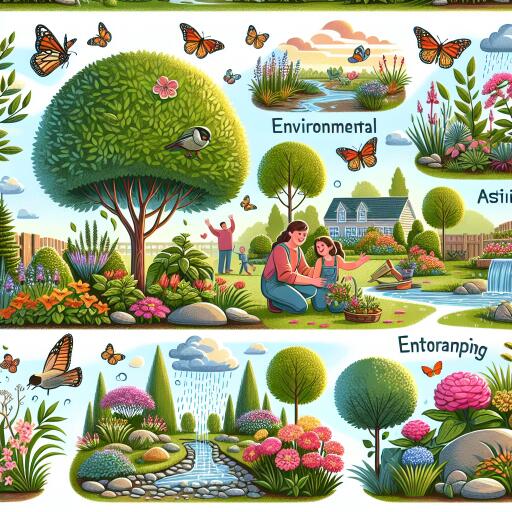
Why Is Landscaping Important? – Green Packs
The role of landscaping transcends mere aesthetic enhancement. It serves as a cornerstone of environmental conservation and bolsters the quality of life for humans and wildlife alike. Embracing green spaces within our surroundings nurtures a healthier ecosystem, setting the stage for a symbiotic existence.
Landscaping’s significance is most palpable in its contribution to cleaner air. The simple act of planting trees and shrubs plays a pivotal role in air purification. Through photosynthesis, these green warriors strip pollutants from the air while fortifying it with vital oxygen. This dual action not only elevates human health but is also a valuable ally in the battle against climate change.
The integrity of our soil is another beneficiary of thoughtful landscaping. In regions battered by erosion, whether through the relentless assault of wind or water, the roots of plants emerge as unsung heroes. Their grip on the soil curtails erosion, safeguarding the land’s fertility for posterity.
Moreover, landscaping contributes to water quality preservation by obstructing the flow of pollutants into aquatic ecosystems. The strategic deployment of plant barriers filters out contaminants, safeguarding our water resources for environmental sustenance and human consumption alike.
Landscaping is also a key player in mitigating urban heat islands — phenomena characterized by elevated temperatures in city areas bereft of greenery. Through shading and the cooling process of evapotranspiration, landscaped areas can temper these heat islands, crafting a more livable and sustainable urban milieu.
Biodiversity thrives in well-landscaped areas where a plethora of plant species, particularly indigenous ones, provides sanctuary to a myriad of creatures. This rich tapestry of life upholds a balanced ecosystem vital for environmental health.
From an economic perspective, ingenious landscaping provides buildings with a natural shield, reducing dependency on artificial cooling and heating systems. The strategic placement of trees and shrubs can lead to substantial savings on energy expenses, contributing to a more sustainable household.
The psychological benefits stemming from interactions with landscaped spaces are profound. Green areas act as natural stress busters, enhancing mood, cognitive function, and overall well-being. A mere stroll in a landscaped park can be revitalizing, illustrating nature’s healing prowess.
Community spirit flourishes in landscaped settings that summon people outdoors to mingle, fostering social ties and enhancing communal well-being. Whether it’s the communal vibrancy of public parks, the shared joy of garden plots, or the tranquil retreat of private green spaces, landscapes are epicenters of community life.
Furthermore, the aesthetic and structural vitality of landscaped environments substantially boosts property values. A well-kempt garden is not just a feast for the eyes but also a prudent financial investment, enhancing curb appeal and enticing prospective buyers.
Embracing sustainable landscaping practices signifies a commitment to a healthier planet. Employing native plants, conserving water, and reducing reliance on chemicals are steps towards a resilient ecosystem. Such practices exemplify responsible stewardship of our environment, leading by example in the quest for sustainability.
In essence, the value of landscaping extends far beyond the visual. It is a multifaceted engine driving ecological balance, community well-being, and environmental sustainability. As we deepen our understanding and practice of eco-friendly landscaping, we contribute to a legacy of a verdant, vigorous planet for future generations.





Leave a Reply